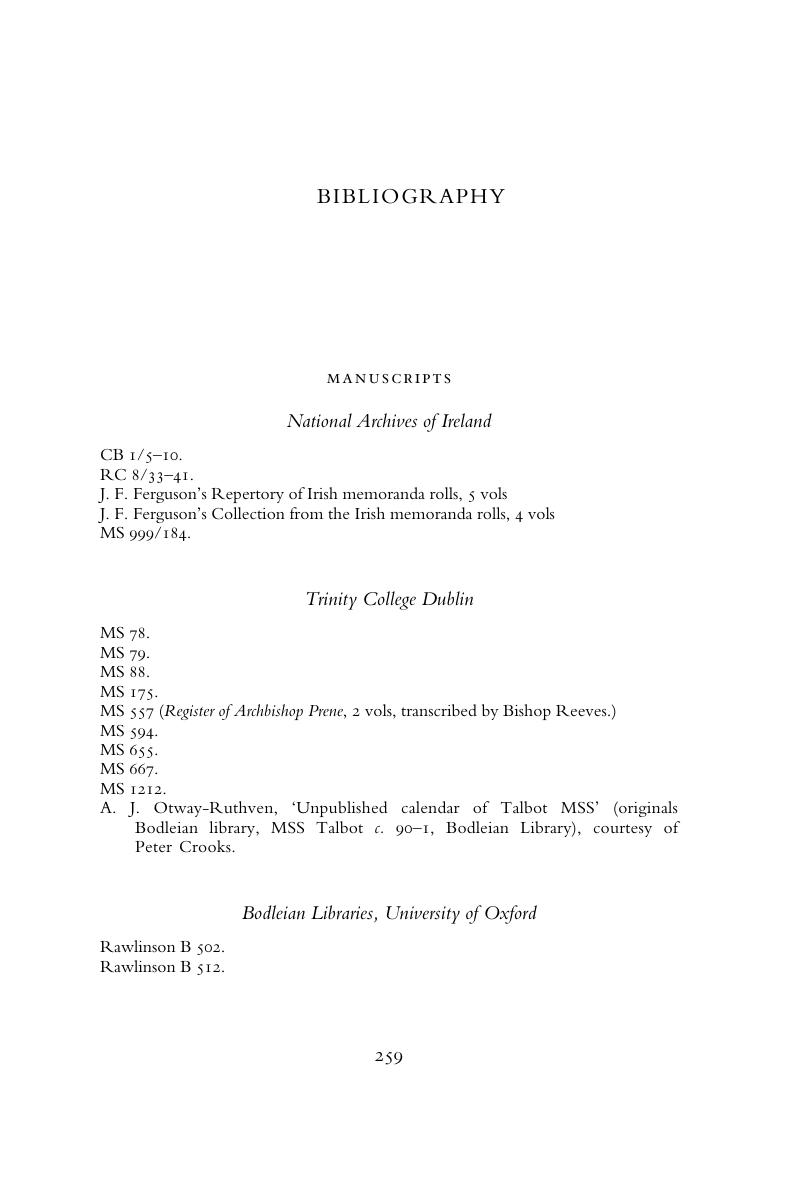 Cultural Exchange and Identity in Late Medieval Ireland
Cultural Exchange and Identity in Late Medieval Ireland Book contents
- Cultural Exchange and Identity in Late Medieval Ireland
- Cambridge Studies in Medieval Life and Thought
- Cultural Exchange and Identity in Late Medieval Ireland
- Copyright page
- Dedication
- Contents
- Maps and Tables
- Acknowledgements
- Abbreviations
- Introduction: Cultural Exchange and Identity in Late Medieval Ireland
- Chapter 1 Defining the Region: The Four Obedient Shires
- Chapter 2 Migration, Assimilation, and Status: The Irish of the Four Shires
- Chapter 3 Mediation and Cooperation: The ‘Two Nations’ in the Church
- Chapter 4 Interethnic Family Ties: Intermarriage and Fosterage
- Chapter 5 Irish Customs in the Four Shires
- Chapter 6 The Irish Language and the English Community
- Conclusions: Identity and the Limits of Assimilation
- Bibliography
- Index
- References
Bibliography
Published online by Cambridge University Press: 12 March 2018
- Cultural Exchange and Identity in Late Medieval Ireland
- Cambridge Studies in Medieval Life and Thought
- Cultural Exchange and Identity in Late Medieval Ireland
- Copyright page
- Dedication
- Contents
- Maps and Tables
- Acknowledgements
- Abbreviations
- Introduction: Cultural Exchange and Identity in Late Medieval Ireland
- Chapter 1 Defining the Region: The Four Obedient Shires
- Chapter 2 Migration, Assimilation, and Status: The Irish of the Four Shires
- Chapter 3 Mediation and Cooperation: The ‘Two Nations’ in the Church
- Chapter 4 Interethnic Family Ties: Intermarriage and Fosterage
- Chapter 5 Irish Customs in the Four Shires
- Chapter 6 The Irish Language and the English Community
- Conclusions: Identity and the Limits of Assimilation
- Bibliography
- Index
- References
Summary

- Type
- Chapter
- Information
- Cultural Exchange and Identity in Late Medieval IrelandThe English and Irish of the Four Obedient Shires, pp. 259 - 291Publisher: Cambridge University PressPrint publication year: 2018
